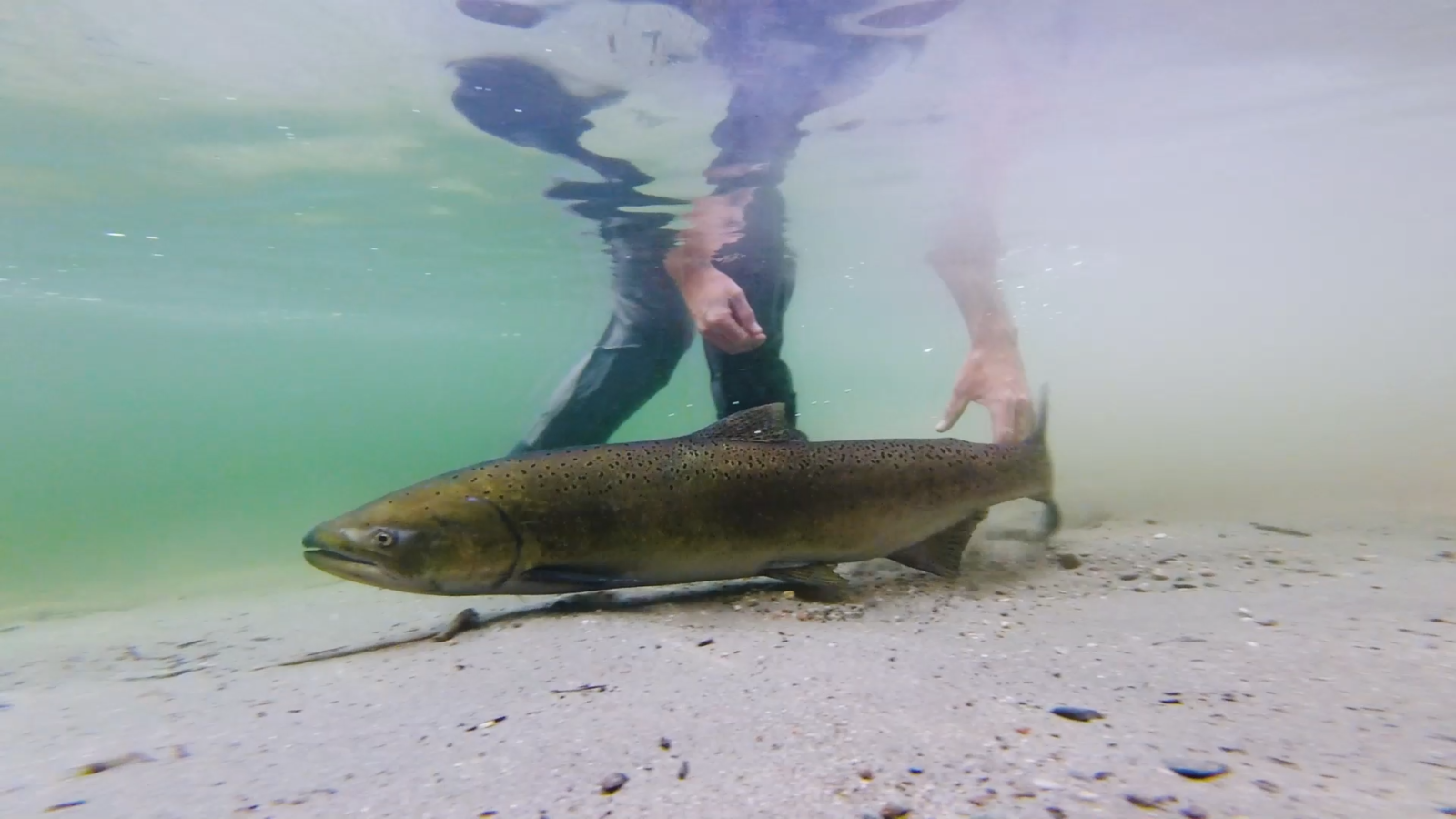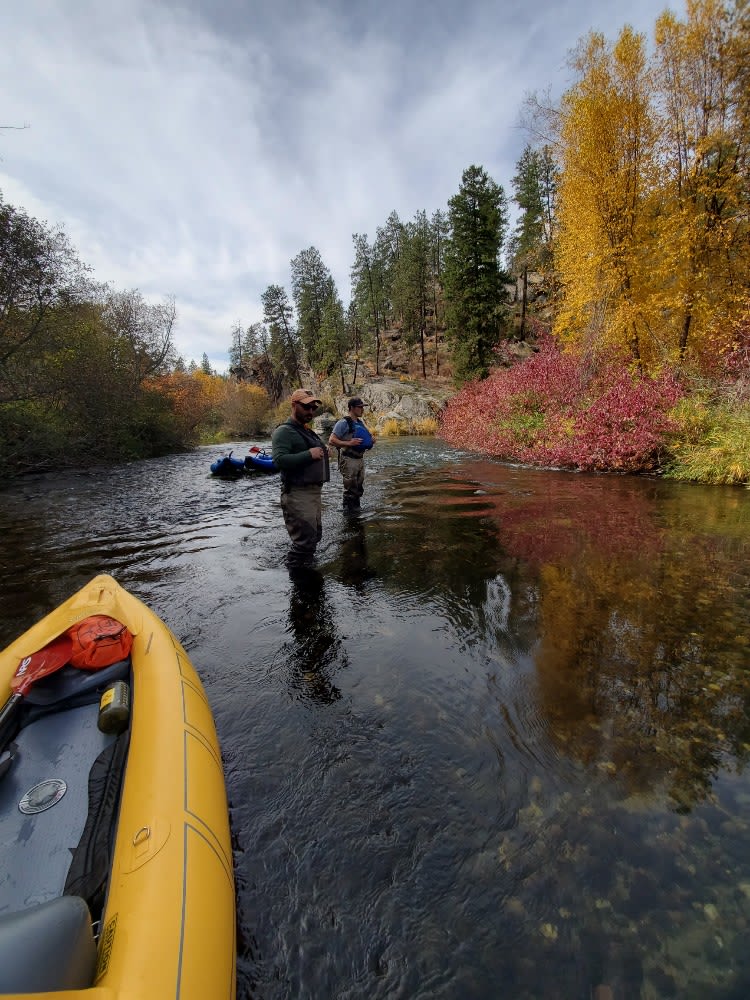There and Back Again, a Salmon Story
March 31, 2022
March 31, 2022
The Salmon Life Cycle by volunteer writer Pat Loomis
A few years ago, I was walking in Leavenworth along Icicle Creek when I spotted dozens of bright red Chinook salmon dead along the shore. It was distressing to witness, but with some research, I learned that the Chinook had reached the final stage of their natural lifecycle as salmon.
Salmon are anadromous, meaning they are born in freshwater, migrate and live out their adult lives in the ocean, and return to their natal birth rivers and streams to spawn (reproduce) before dying. Their innate ability to return to the same river where they hatched is known as homing behavior, an instinct driven by their smell memory. This olfactory sense is accompanied by the Earth’s magnetic field which scientists believe the fish use as a compass to navigate the long waters home. Salmon are biologically programmed to swim the river once in each direction, and if they are successful, against myriad odds, complete their lifecycle after spawning in their home waters.

The Salmon Lifecycle:
Eggs: Female salmon lay eggs in freshwater gravel nests known as redds. They use their tails to create a shallow depression in the riverbed where they will then deposit their eggs and wait for a male to fertilize them. After fertilizing, both fish will cover the eggs in the redd with gravel as protection from predators. A female salmon can perform this up to seven times in different redds throughout the river, laying anywhere from 1500-7000 eggs per redd!
Alevin: The eggs hatch into tiny salmon known as Alevin. The Alevin’s yolk sac stays attached to its underside for the next few months as the fish grows. The yolk sac provides nutrients for the young salmon until they are large enough to leave the redd.
Fry: Once the salmon have fully absorbed the yolk sac and leave the redd, they are known as fry. To become free swimmers, the small fish must rise to the surface and gulp air to fill their swim bladder and gain neutral buoyancy in the water. Fry will feed on small aquatic insects and stay in freshwater until it is time for their migration to the ocean. The presence of fry in a river is indicative of a healthy watershed because the small fish are extremely sensitive to changes in water quality and rely on proper habitat to avoid predators.
Smolt: The young fish will begin their journey to the ocean between the ages of two and three. Smolt grow new scales and turn a shiny silver in color as they move downstream to the ocean- an arduous journey that can take up to two years. Chinook and Sockeye can travel from Central Idaho over 900 miles to the ocean and climb an elevation of several thousand feet in total during this journey!
Adults: Adult salmon stay in the ocean for 1-8 years depending on the species. With the biological clock ticking, salmon will begin the trip back to their freshwater home, during which time a salmon’s body undergoes more changes to prepare for spawning. Their silvery color turns to reds, browns, and greens, and the males develop a hooked jaw known as a Kype, canine-like teeth, and a curved, humped body. Their condition will deteriorate as energy shifts from personal survival to reproduction and they will stop feeding, now motivated only by completing the long trip home to spawn.
Kelts, Death, and Decomposition: After spawning and leaving fertilized eggs in new redds, salmon are known as kelts. Programmed aging known as phenoptosis takes over, releasing corticosteroids which hastens death, and the salmon’s life comes to an end. But it’s not entirely over—The salmon’s carcass will provide vital nutrients for the soil, animals, and watershed to continue thriving.
Salmon face many challenges during their lifespan, but human pressures add stress to the delicate ecosystem. Quality habitats for redds and salmon populations are compromised by high water temperatures and pollutants. Rerouted watersheds can cause reductions in river flows and result in low oxygen levels in the water. Infrastructure such as dams block the salmon’s upstream route back home.
When I saw Chinook salmon on the shore, it was a reminder of the circle of life, and our responsibility to help protect and restore salmon habitat for healthy watersheds.
